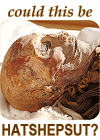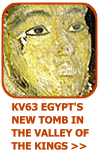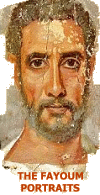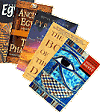|
|
||||||||||||||||||||||||||||||
|
|
The preservation of the body
It was often suggested that mummification was inspired by simple predynastic pit burials, in which the body was naturally dried and preserved by the desert sands, however it was probably more likely the desire to preserve the image of the body that actually motivated mummification. The first steps towards mummification (wrapping the body in linen) coincide with the development of tomb superstructures just after the rise of the Egyptian state. Discoveries in early elite tombs in Meidum show how dismemberment and re-composition of corpses was practiced on important people. Embalming of the body Mummification was not only a technical process but a ritual one, seeking to recreate the making of the first original mummy, Osiris.
The process of mummification Shortly after death the body would be taken to a tent known as the "ibw" the place of purification. There it would be thoroughly washed in a solution of natron (a naturally occurring compound of sodium carbonate and sodium bicarbonate) before being taken to another tent known as the "per nefer" the house of beauty. Here the actual mummification process would take place. The viscera (internal organs) were removed and dried, rinsed, bandaged and then placed in canopic jars or parcels which were placed with the body. These canopic jars would be decorated with the images of the "four sons of Horus". From the 18th Dynasty onwards, the stoppers of canopic jars were fashioned into the forms of the heads of each of the four gods:
After the removal and preservation of the internal organs, dry natron would be moulded over the corpse and possibly also inserted into the body cavity, in order to assist desiccation. The body would be left to thoroughly dehydrate for some forty days.
A very important part of the outer mummy was a death mask, placed over the head to provide an idealised image of the deceased as a resurrected being. The mask played a crucial symbolic role, for it signified the elevation of the dead person to a higher plane of existence in the afterlife. The entire process, from death to burial would take around seventy days. Discover how the Egyptians used astronomy to build upon their theology >>
|
|||||||||||||||||||||||||||||

|
||||||||||||||||||||||||||||||
|
||||||||||||||||||||||||||||||








 Preservation of the body was an essential part of Ancient Egyptian funerary practice. Without the body, the "ka" could not return to find sustenance, and if the body was decayed or unrecognisable, then the ka would go hungry and the afterlife of the deceased would be jeopardised. Mummification was therefore dedicated to the prevention of decay.
Preservation of the body was an essential part of Ancient Egyptian funerary practice. Without the body, the "ka" could not return to find sustenance, and if the body was decayed or unrecognisable, then the ka would go hungry and the afterlife of the deceased would be jeopardised. Mummification was therefore dedicated to the prevention of decay.



